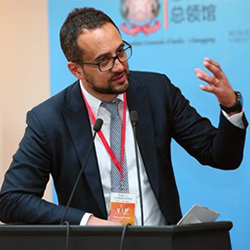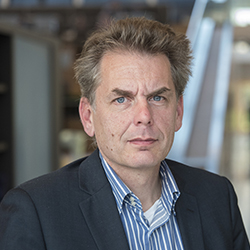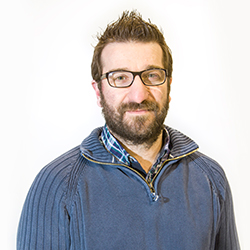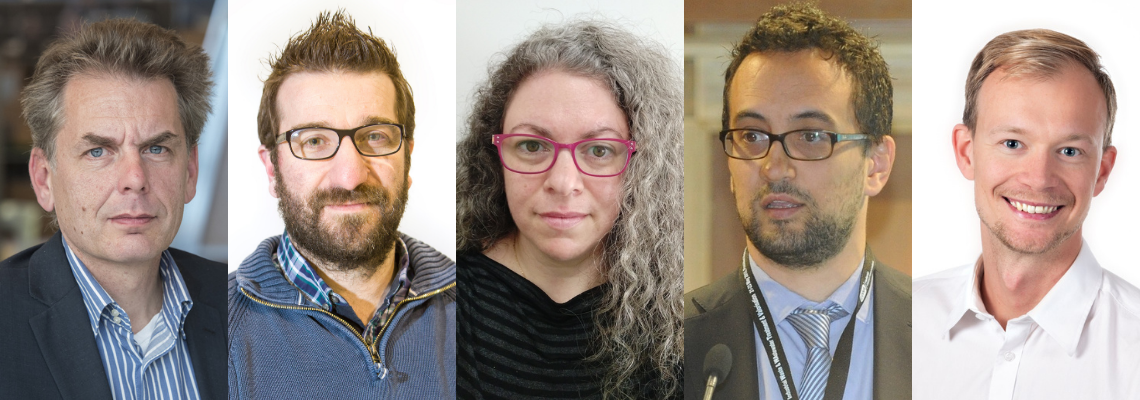Our ambitions for finding the ULTIMATE water symbiosis
A total of 27 project partners have come together under the ULTIMATE project (indUstry water-utiLiTy symbIosis for a sMarter wATEr society).
Co-financed by the European Commission (grant agreement No. 869318), the four-year
Horizon2020 project is being carried out under the EU Water in the Context of the Circular Economy programme.
The ambition is to create economic value and increase sustainability by valorising resources within the water cycle. Water is being repositioned as a vector for energy and materials, instead of merely being disposed of after collection and treatment.
ULTIMATE uses real-world, large scale industrial demonstrations to build evidence-based symbiosis applications that unlock water-embedded resources including (waste)water, energy and materials.
In total, the project has selected nine large-scale demonstrations (demo sites) across Europe from the agro-food, beverage, petrochemical and biotech sectors.
From water utilities to whisky distilleries, the partners represent a variety of stakeholders who could benefit from circular economy activities. In this sense, collaboration is the start for innovation and local implementation.
What do the ULTIMATE participants hope to achieve through the ULTIMATE collaboration? Below are five responses from project partners in Israel, Denmark, Italy, the Netherlands, and UK.
Testing a novel fixed media technology

Hadas Raanan Kiperwas, PhD. researcher, effluent treatment and reuse, water quality division, Mekorot, Israel's National Water Company (Demosite 6 – Karmiel, Shafden, Israel)
Mekorot is very excited to be a part of the ULTIMATE consortium. ULTIMATE is our second collaboration with many members of this group (the first was during the SMART-Plant consortium), and we hope to build on and expand our previous experience.
We are collaborating with two Israeli groups – Agrobics and The Galilee Society - to test a novel, energy-producing fixed media technology for anaerobic wastewater treatment that can replace primary clarifiers and has proven efficiency in treating agro-industrial wastewater.
In ULTIMATE, we are pushing the technology further by introducing an even higher amount of organic matter (mainly from olive mills) and by extending the treatment process to include an Anaerobic Membrane Bioreactor (MBR). The complete process will produce secondary effluent.
This work directly supports our interest in green, energy-neutral/positive technologies that stimulate resource recovery and the concept of a circular economy. To this end, we will be collaborating with G2G that has developed a technology for recovering phenols from wastewater streams.
We are excited that ULTIMATE will be the first project installed at our new R&D centre for water reuse at the Shafdan site, the largest wastewater treatment plant in Israel treating 370,000 m3/day of municipal wastewater.
Mekorot has been nurturing this centre for many years and is actively expanding and improving its facilities. Our vision is for our R&D facility to become a regional centre for water reuse research and innovation.
Controlling municipal & industrial plants simultaneously

Per Nobel, process engineer, Novozymes (Demosite 9: Kalunborg, Denmark)
Through ULTIMATE, we expect to intensify the industrial symbiosis with the down-stream municipal plant and to pioneer wastewater treatment digitalisation beyond plant borders.
We will consider two treatment plants simultaneously (the Kalundborg utility plant, and the Novozymes industrial treatment plant) and use a joint control system, in real-time, to manage these two facilities. We hope to be able to optimise set points at each plant simultaneously and make the wastewater treatment more efficient.
What will be the result? We aim to increase the treatment efficiency, energy and chemical savings, as well as increase the robustness of the process in terms of effluent quality.
Achieving symbiosis has been our ambition for a long time already. However, writing the specifications for such a system requires a lot of programming, as well as engineering resources. The collaboration enables us to move forward.
ULTIMATE will also assure that the results become more visible and reproducible. Each time we do an advancement within environmental technology or energy saving, it only has an impact if we make it visible, register it and share the outcomes.
Upgrading circular public-private symbiosis

Prof. Ing. Francesco Fatone, PhD, IWA Fellow professor of chemical and environmental engineering, Università Politecnica delle Marche (Demosite 3, Rosignano, Italy)
ULTIMATE proposes an innovative concept of smart symbiosis between the public and private sector to increase the sustainability of the industrial production by valorizing resources within the urban and industrial water cycles.
Through the project, we want to test and validate innovative cyber-physical solutions to make the industrial reuse of treated wastewater more convenient and advantageous in the Italian public-private partnership Aretusa, which was established more than ten years ago.
We expect that this project will innovate, digitalise, and upgrade this circular public-private symbiosis for the recovery and reuse of safe water and valuable materials.
Thanks to the ULTIMATE collaborative framework, we will raise public awareness and increase the social impact of the territorial water reuse schemes, even to finally pave the way for a water-smart living lab. The project will provide political, economic and governance proposals for consolidating the symbiosis, which can be replicated in other cases, where municipal wastewater treatment plants collaborate with industrial partners.
As water researchers, we are glad to collaborate within the ULTIMATE consortium to co-create, disseminate and jointly exploit new knowledge on circular solutions and water-smart industrial symbiosis.
Finally, ULTIMATE will complement our previous and parallel activities on municipal wastewater treatment and agricultural reuse. By delivering industrial water reuse, we will upgrade and complete our experience for circular water management.
Innovations in governance models

Gerard van den Berg, PhD, project manager international research programme, KWR Water Research Institute (Project ULTIMATE co-ordinator, The Netherlands)
My ambition is that the learnings from the nine cases in ULTIMATE lead to new developments and implementations. When I speak about innovations, it is not limited to technical solutions, but it also includes innovations in business development and governance models.
For me, ULTIMATE is not just a four-year project. I aim to achieve collaborations to co-create, transfer knowledge and exploit new developments. In this perspective, I see it as a process.
I also believe we should find ways beyond the project to stimulate continuous interaction between industry and research. In one sense, the projects bring together research and utility communities and then afterwards, utilities often continue with business as usual. There is added value in having this continuous interaction, even after the new ideas have been implemented, to learn from the experience. How does it work? How can we still add value to this? What can we learn for other projects?
Research and policy departments across Europe are looking for well-established examples, often asking "where does it work in practice?" or "where is your biggest showcase?" Even though conditions in China or Singapore, for example, will be different from here, it is important to show examples of implementation. These can then be applied under local conditions, with different cultures and investments.
We must follow up with the demo cases we have set and promote them as living labs. That means making their research available but also making them available to test new solutions as well.
Validating circular economy-based solutions

Dr Marc Pidou, lecturer in resource recovery, Cranfield Water Science Institute (Demosite 7: Glenmorangie distillery in Tain, Scotland)
Although schemes for water recycling and resource recovery from wastewater are becoming more common throughout the world, we still have a long way to go to fulfil the true circular economy potential from sewage.
Through ULTIMATE, we have the opportunity to bring together many of the stakeholders involved and enable significant advances towards this goal.
With the demo case, we will demonstrate and validate circular economy-based solutions for the water sector and industries. We also aim to address implementation bottlenecks through engagement with all other stakeholders, including regulators, the end-users of the resources recovered, as well as the public.
Related content
- Alliance to find ULTIMATE wastewater recovery
- 5 city-wide circular water strategies flagged by UNESCO
- Overcoming hurdles to resource recovery from wastewater
- Explore all our coverage related to waste water
Share your water technology stories with us
Do you have an innovation, research results or an other interesting topic you would like to share with the international water technology industry? The Aquatech website and social media channels are a great platform to showcase your stories!
Please contact our Sr Brand Marketing Manager Annelie Koomen.
Are you an Aquatech exhibitor?
Make sure you add your latest press releases to your Company Profile in the Exhibitor Portal for free exposure.
We promise never to send you spam and you can unsubscribe at any time!
